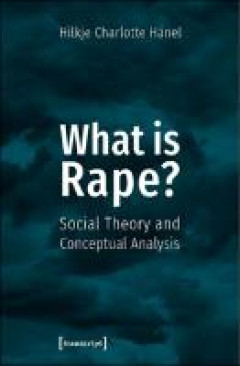Ditapis dengan
E-book Collective Bargaining and the Gig Economy : A Traditional Tool for New…
Whether a Kuhnian change of paradigms in business or simply a new way of performing traditional activities, the gig economy is a latent issue, and its regula-tion is extremely diverse in the Member States of the European Union (EU). Its very terminology is still the object of debate. The beatific initial designation of the ‘sharing economy’ is curren…
- Edisi
- -
- ISBN/ISSN
- 9781509956210
- Deskripsi Fisik
- 311 hlm
- Judul Seri
- -
- No. Panggil
- 331.011 ADA c
E-book Sri Ksetra Museum Collection Inventory
This inventory is the first comprehensive account of objects held by the Sri Ksetra Museum, Hmawza. It is the result of a collaborative project that started in 2014 with Museum and the Field School of Archaeology (FSOA) staff. The aims of the project were to catalogue the Pyu material and develop staff skills in museum methods. At first the goal was to document works on display in the museum, a…
- Edisi
- -
- ISBN/ISSN
- 9783110674064
- Deskripsi Fisik
- 287 hlm
- Judul Seri
- -
- No. Panggil
- 069.3591 GAL s
E-book Down to Earth Archaeology
Down to Earth Archaeology collects sixteen archaeological papers by Professor William Y. Adams chosen by the author, who added introductory commentary to each. These articles were written at various times during his lengthy and productive academic career for different purposes and for different audiences. Most of those selected had been previously published only in a limited way, either as conf…
- Edisi
- -
- ISBN/ISSN
- 9781803272306
- Deskripsi Fisik
- 244 halaman, ilus.
- Judul Seri
- -
- No. Panggil
- 930.1 ADA d
E-book Medieval Londoners : Essays to mark the eightieth birthday of Caroline…
Caroline Barron leads the field on medieval London and her work on its politics, governance, economy and fabric has greatly enhanced our understanding of the late medieval city. It is, however, her interest in and enthusiasm for the men and women who lived and worked in, or were visitors to, the capital, and her ability to inspire that interest and enthusiasm …
- Edisi
- -
- ISBN/ISSN
- 9781912702152
- Deskripsi Fisik
- 382 hlm
- Judul Seri
- -
- No. Panggil
- 824 BER m

E-book What is Rape?: Social Theory and Conceptual Analysis
What exactly is rape? And how is it embedded in society? Hilkje Charlotte Hänel offers a philosophical exploration of the often misrepresented concept of rape in everyday life, systematically mapping out and elucidating this atrocious phenomenon. Hänel proposes a theory of rape as a social practice facilitated by ubiquitous sexist ideologies. Arguing for a normative cluster model for the conc…
- Edisi
- -
- ISBN/ISSN
- 9783839444344
- Deskripsi Fisik
- 282 halaman
- Judul Seri
- -
- No. Panggil
- 305.3 HAN w
E-Book Visnu-Narayana: Changing Forms and the Becoming of a Deity in Indian R…
The contributions collected in this volume deal with the complex history of the Indian deity Vi??u-N?r?yana. This conception of God evolved in various traditions in India, especially in South India, during the first millennium CE. The history of this development is reconstructed here by various means, including philological exegesis, the history of ideas, and iconographic evidence.
- Edisi
- -
- ISBN/ISSN
- -
- Deskripsi Fisik
- 502 halaman
- Judul Seri
- -
- No. Panggil
- 294.5 SCH v
E-book Principles of Horticulture
Horticulture may be described as the practice of growing plants in a relatively intensive manner. This contrasts with agriculture, which, in most Western European countries, relies on a high level of machinery use over an extensive area of land, consequently involving few people in the production process. The boundary between the two is far from clear, especially when considering large-sca…
- Edisi
- -
- ISBN/ISSN
- 9780750686945
- Deskripsi Fisik
- 426 hlm
- Judul Seri
- -
- No. Panggil
- 577.55 ADA p
E-book Handbook of Essential Oils : Science, Technology, and Applications
Toxicology and Safety of Essential Oils: A Constituent-Based Approach” (Chapter 7). On account of the complexity of these natural products, the toxicological or biochemical testing of an EO will always be the sum of its constituents which either act in a synergistic or in an antagonistic way with one another. Therefore, the chemical characterization of the EO is very important for the underst…
- Edisi
- -
- ISBN/ISSN
- 9781420063158
- Deskripsi Fisik
- 994 hlm
- Judul Seri
- -
- No. Panggil
- 661.805 ADA h
E-book Changing Time : Shaping World Changemakers in Arts & Education
A multi-perspective and knowledge-oriented examination of such influ-encing variables and parameters as globalization and migration; digitization and inclusion; phenomena of media democracy; increasingly non-national citizens or those with multiple identities; the changed, mediatized social-ization of children and young people; unequal distribution of power and re-sources betwe…
- Edisi
- -
- ISBN/ISSN
- 9783839461358
- Deskripsi Fisik
- 311 hlm
- Judul Seri
- -
- No. Panggil
- 707 AXE c
E-book Genes and DNA : A Beginner's Guide to Genetics and Its Applications
Genetics is one of the greatest adventures in science. This book will help you explore everything from the foundations of genetics, a little over a century ago, to modern genetic applications, including the genetic engineering of plant products that you probably eat on a regular basis. You will learn about medical, legal, and ethical aspects of genetics, as well as the impact of genetics on our…
- Edisi
- -
- ISBN/ISSN
- 0–231–13013–9
- Deskripsi Fisik
- 239 hlm
- Judul Seri
- -
- No. Panggil
- 576 OMO g
 Karya Umum
Karya Umum  Filsafat
Filsafat  Agama
Agama  Ilmu-ilmu Sosial
Ilmu-ilmu Sosial  Bahasa
Bahasa  Ilmu-ilmu Murni
Ilmu-ilmu Murni  Ilmu-ilmu Terapan
Ilmu-ilmu Terapan  Kesenian, Hiburan, dan Olahraga
Kesenian, Hiburan, dan Olahraga  Kesusastraan
Kesusastraan  Geografi dan Sejarah
Geografi dan Sejarah